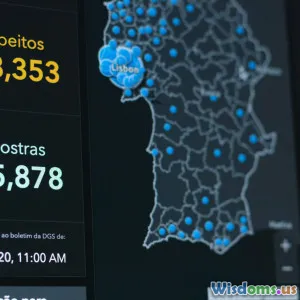
The Impact of Social Media on Crime Solving
6 min read Explore how social media is revolutionizing crime investigation and aiding law enforcement in solving cases efficiently. (0 Reviews)
The Impact of Social Media on Crime Solving
Social media has become an integral part of modern life, with billions of users actively engaging across various platforms. Its influence extends beyond personal communication and entertainment; it has also emerged as a powerful tool in crime solving and law enforcement. In this article, we will explore how social media impacts crime investigation, the advantages it offers to law enforcement agencies, and the challenges that come with it.
Understanding the Role of Social Media in Crime Solving
In recent years, platforms such as Facebook, Twitter, Instagram, and TikTok have been leveraged by law enforcement to gather information, disseminate alerts, and engage with the community. These platforms provide a vast repository of user-generated content that can be invaluable in criminal investigations. Here are some ways social media is impacting crime solving:
1. Real-Time Information Sharing
Social media allows for the instantaneous sharing of information. During an active investigation or emergency situation, law enforcement can quickly disseminate information to the public, asking for assistance or providing updates. For example, the police in various cities have used Twitter to share descriptions of suspects, request tips, and provide updates on ongoing cases. This immediacy can lead to faster resolutions and increased public involvement.
2. Crowdsourcing Evidence
Investigators have found that social media can serve as a crowdsourcing tool for evidence. Platforms allow users to share photos, videos, and eyewitness accounts that may assist in piecing together events surrounding a crime. The case of the Boston Marathon bombing in 2013 illustrates this point well. Authorities used social media to collect images taken by spectators, which played a crucial role in identifying the suspects.
3. Building Community Relationships
Social media fosters communication between law enforcement agencies and the communities they serve. By engaging with the public through social media, police departments can build trust and rapport, making it easier for community members to provide tips and information. For instance, community policing initiatives often use social media to inform residents about local crime trends and safety tips, encouraging proactive involvement.
4. Monitoring Potential Threats
Law enforcement agencies can use social media to monitor public sentiment and identify potential threats. By analyzing posts and interactions, police can detect patterns that may indicate criminal activity or unrest. For example, monitoring social media for specific keywords related to gang violence can help prevent crimes before they occur.
5. Digital Footprints
Social media leaves behind digital footprints that can be crucial in investigations. Users often share their locations, activities, and relationships, which can aid investigators in understanding a suspect's movements and connections. This information can be pivotal in establishing motives or alibis. A notable case involved the arrest of a suspect in a robbery after investigators uncovered incriminating posts on their social media account.
Challenges and Ethical Considerations
While social media offers numerous benefits for crime solving, it also presents challenges and ethical dilemmas. Some of these include:
1. Privacy Concerns
The use of social media in investigations raises significant privacy concerns. Users may not be aware that their posts could be scrutinized by law enforcement. It is essential for agencies to navigate these ethical waters carefully, ensuring they respect individuals' rights while pursuing justice.
2. Misinformation and Fake News
The rapid spread of information on social media can also lead to the dissemination of misinformation. False reports can hinder investigations or mislead the public. Law enforcement must develop strategies to verify information before acting on it.
3. Digital Divide
Not all communities have equal access to social media or the internet. Relying heavily on these platforms can create disparities in community engagement and information gathering, particularly in marginalized populations.
Conclusion
The impact of social media on crime solving cannot be overstated. It has transformed the way law enforcement agencies investigate crimes, engage with communities, and gather evidence. While challenges remain, the potential for social media to enhance public safety and improve crime resolution is significant. By harnessing the power of these platforms responsibly, law enforcement can foster a more collaborative and effective approach to crime solving, ultimately leading to safer communities. As technology continues to evolve, the relationship between social media and crime investigation will undoubtedly deepen, offering new opportunities and challenges for those in the field.
Rate the Post
User Reviews
Popular Posts





















